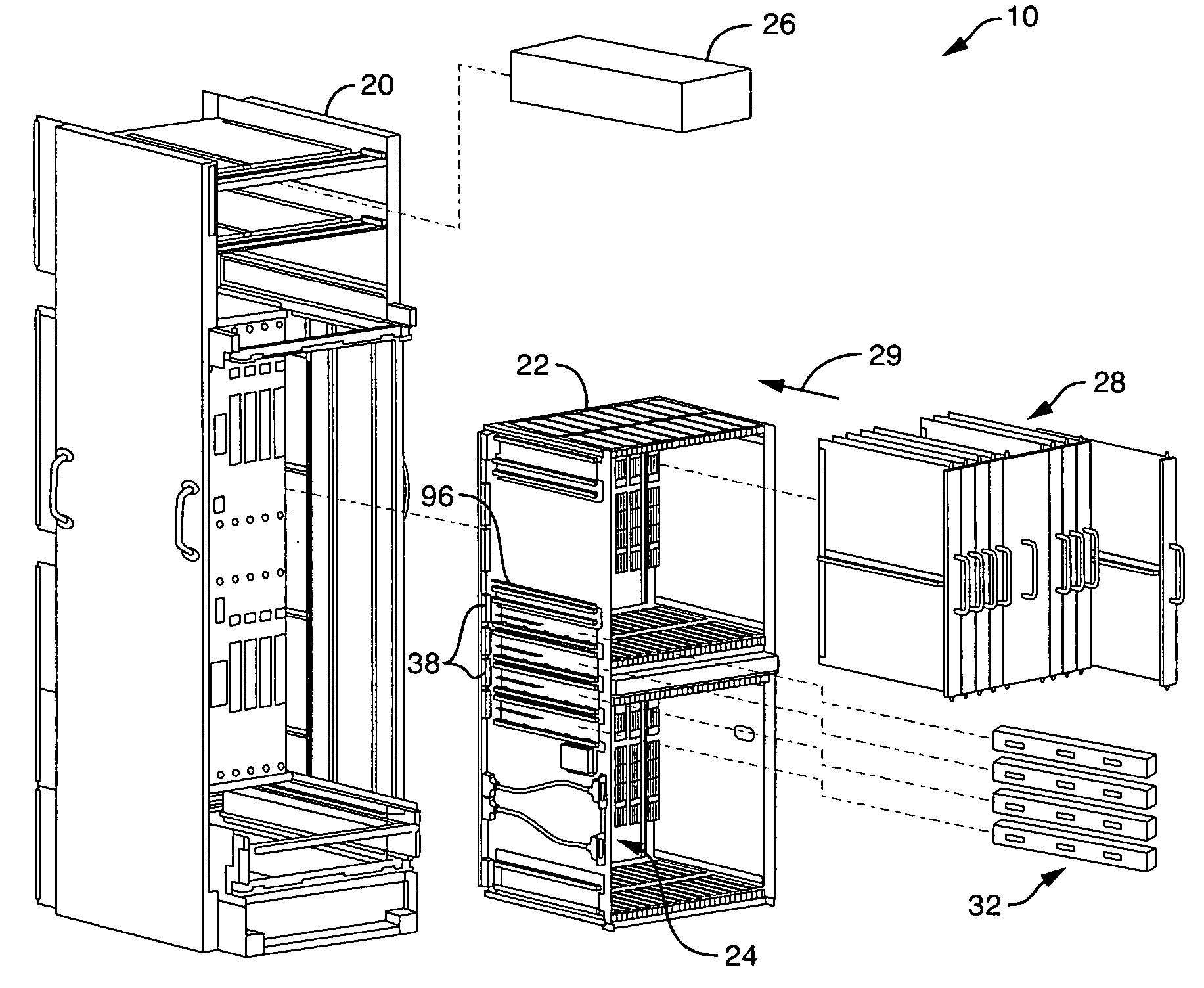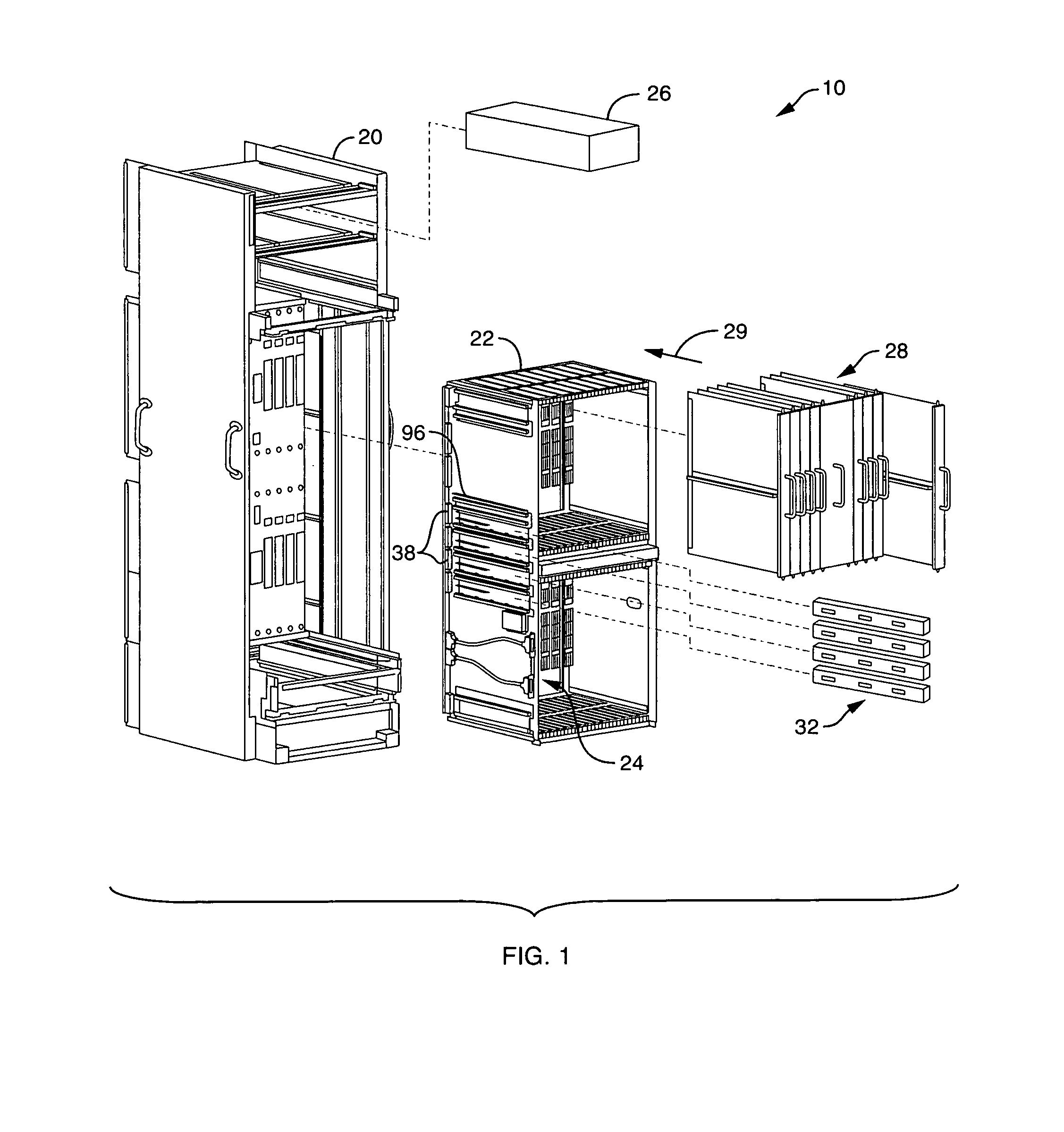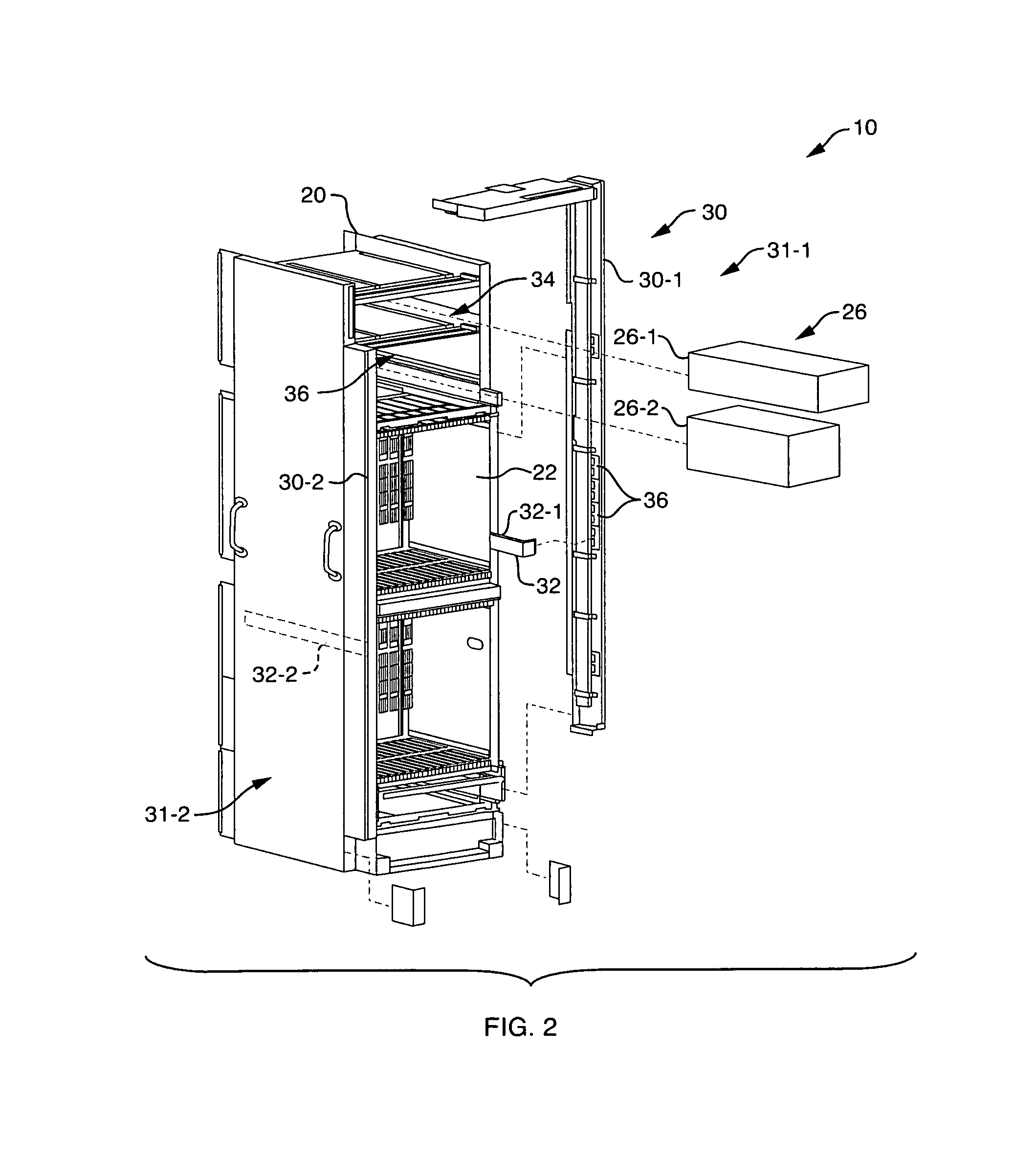Methods and apparatus for distributing power in a computerized device
a computerized device and power distribution technology, applied in the direction of electrical apparatus casings/cabinets/drawers, coupling device connections, instruments, etc., can solve the problems of requiring a relatively large number of power conditioning components, connectors that create electromagnetic interference (emi) within the computerized device, and suffer from a variety of deficiencies. , to achieve the effect of minimizing the emission of emi and reducing the conduction and radiation of electromagnetic interferen
- Summary
- Abstract
- Description
- Claims
- Application Information
AI Technical Summary
Benefits of technology
Problems solved by technology
Method used
Image
Examples
Embodiment Construction
[0023]Embodiments of the present invention provide mechanisms and techniques for distributing power in a computerized device. In a computerized device requiring a relatively large amount of power during operation (e.g., between approximately 10 kW to 15 kW) at a relatively large current (e.g., between approximately 200 and 300 amperes), an electrical conductor or power distribution assembly having a substantially flat, planar geometry electrically couples a power supply, via bus bars, to a midplane of the computerized device. The substantially flat planar geometry of the power distribution assembly minimizes conduction and radiation of electromagnetic interference (EMI) by the electrical conductor during operation of the computerized device.
[0024]Additionally, the power distribution assembly includes connector ends that detachably couple to the midplane and to the power supply. The detachable connector ends allow a user to electrically and physically decouple a power supply from a m...
PUM
 Login to View More
Login to View More Abstract
Description
Claims
Application Information
 Login to View More
Login to View More - R&D
- Intellectual Property
- Life Sciences
- Materials
- Tech Scout
- Unparalleled Data Quality
- Higher Quality Content
- 60% Fewer Hallucinations
Browse by: Latest US Patents, China's latest patents, Technical Efficacy Thesaurus, Application Domain, Technology Topic, Popular Technical Reports.
© 2025 PatSnap. All rights reserved.Legal|Privacy policy|Modern Slavery Act Transparency Statement|Sitemap|About US| Contact US: help@patsnap.com



